I’ve always liked getting my head in the trough, and discovering new cuisine has been one of the joys of my Odyssey. Having said that, I must admit that when I front up in a new country and don’t speak the language (i.e. everywhere I go), trying out the local food can be confusing and intimidating. However, when I reached Skopje in North Macedonia I was in good hands, with my friend, local resident and foodie Ljubica (Lyoo-bits-ah) there to guide me.
Ljubica told me that the best place to try traditional Macedonian food was the famous Old City House restaurant in downtown Skopje. So off we went one bone-chillingly cold night to begin my education. Old City House is 80% restaurant and 20% museum, and states on the menu: ‘Built in the distant 1836, this house is the oldest traditional house in Macedonia which is still in function…(this house) today is a great national restaurant with excellent, warm and above all, old Macedonian traditional setting’. Sounds ideal, doesn’t it?
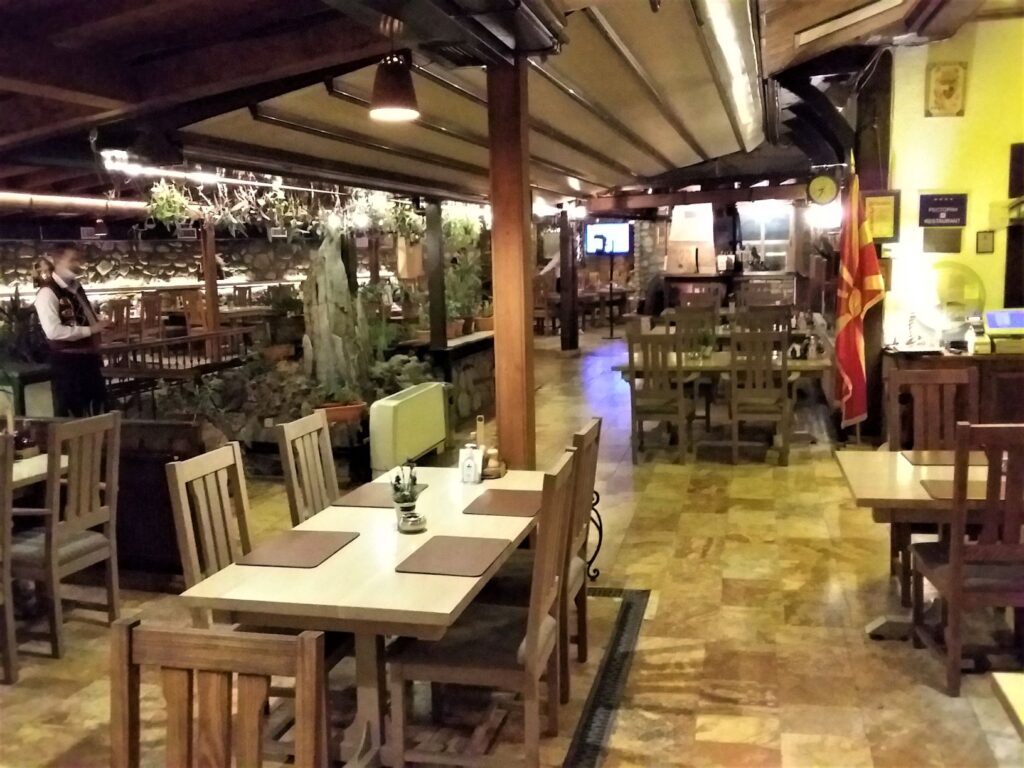
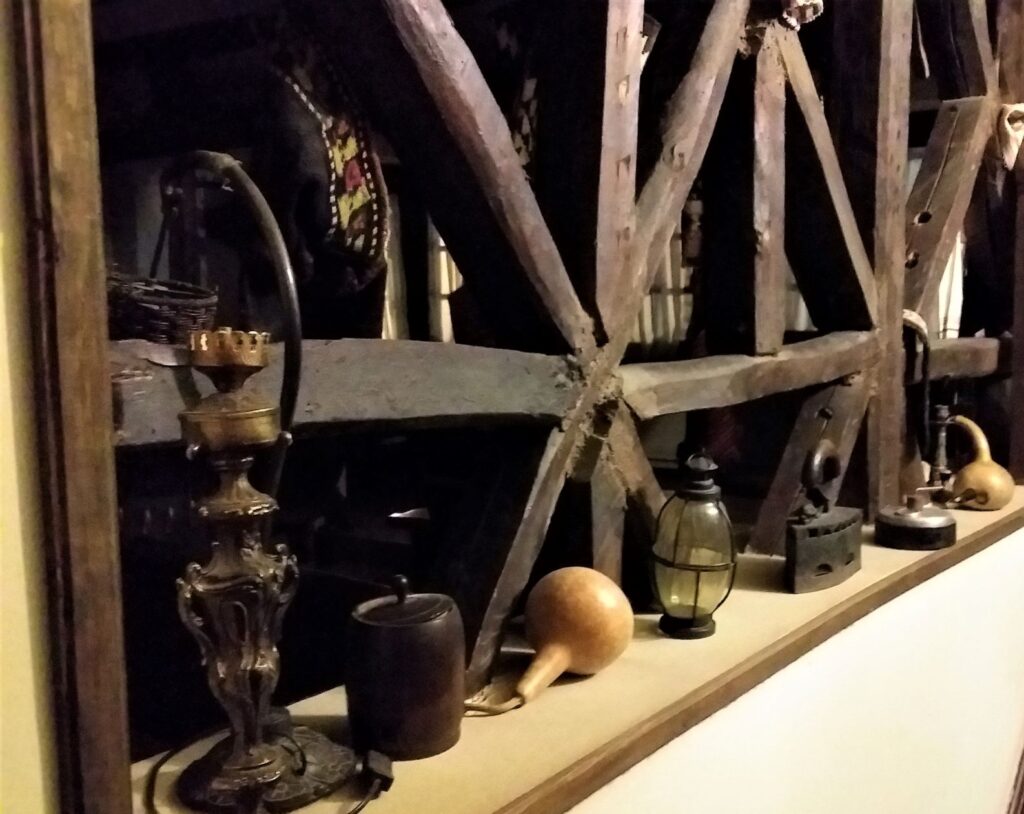
Ljubica wanted me to try a whole bunch of different things, so we ordered up big. First up were some tasty entrees.
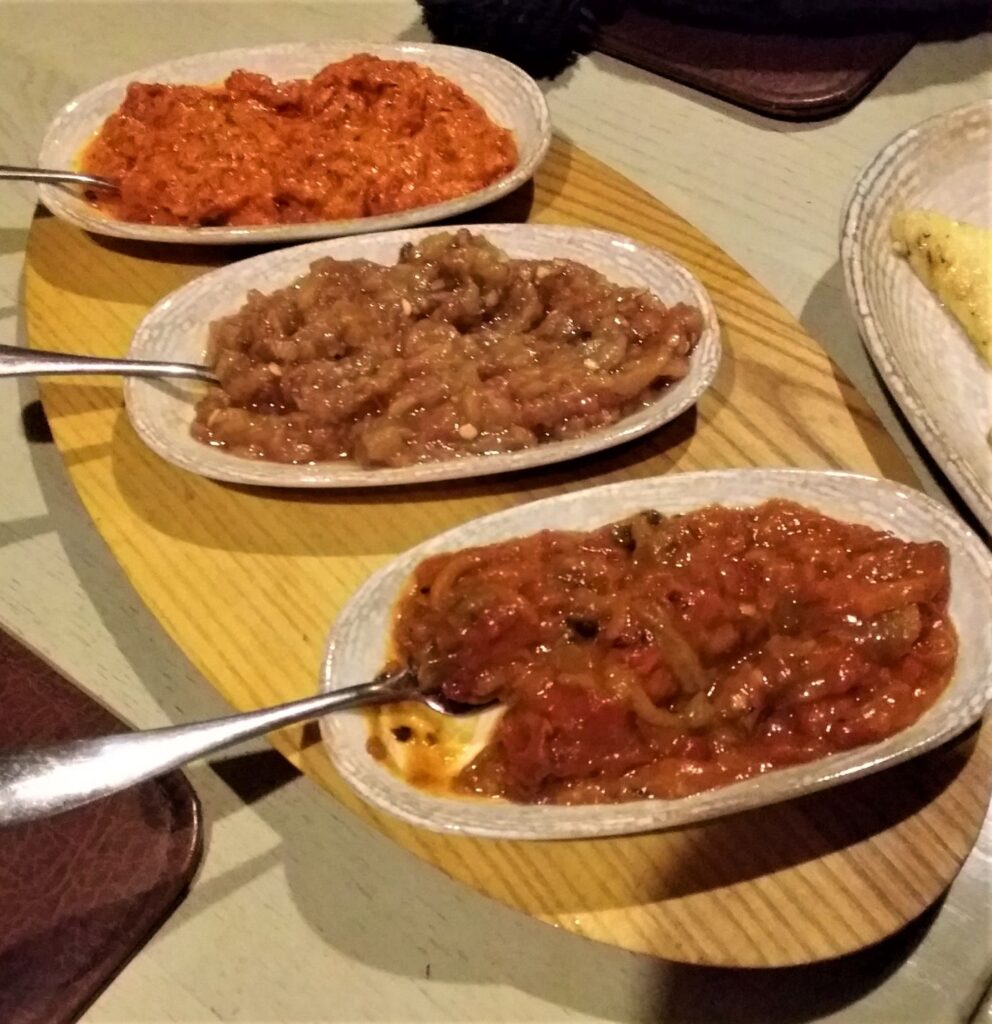
Up top is ajvar, a red pepper and eggplant dip/spread that is hugely popular throughout the Balkans. The name ajvar comes from the Turkish word havyar (the Ottoman Turks turned up in Macedonia in the mid-1300s and, despite not being made to feel particularly welcome, stayed for over 500 years) which means caviar, despite the fact that ajvar contains only vegetables. Mysterious.
In the middle is pindzur, which is similar to ajvar, but contains green peppers and tomatoes. Apparently in some areas of the Balkans the names ajvar and pindzur are used interchangeably, which would be a bastard if you were allergic to tomatoes. Last but not least is lutenica, which is like ajvar but also contains tomato and chilli. Bit confusing, isn’t it? Don’t worry, just pass your plate over and have a taste. Spread a little of this flavoursome threesome on your crusty bread and you’re off to a winning start.
Next on the entree list was some cheese goodness. On the left is bieno sirenje, a hard, dry cheese that is fried and comes out a little like haloumi. To the right is ovcho sirenje, a white cheese made from sheep’s milk. Delish.
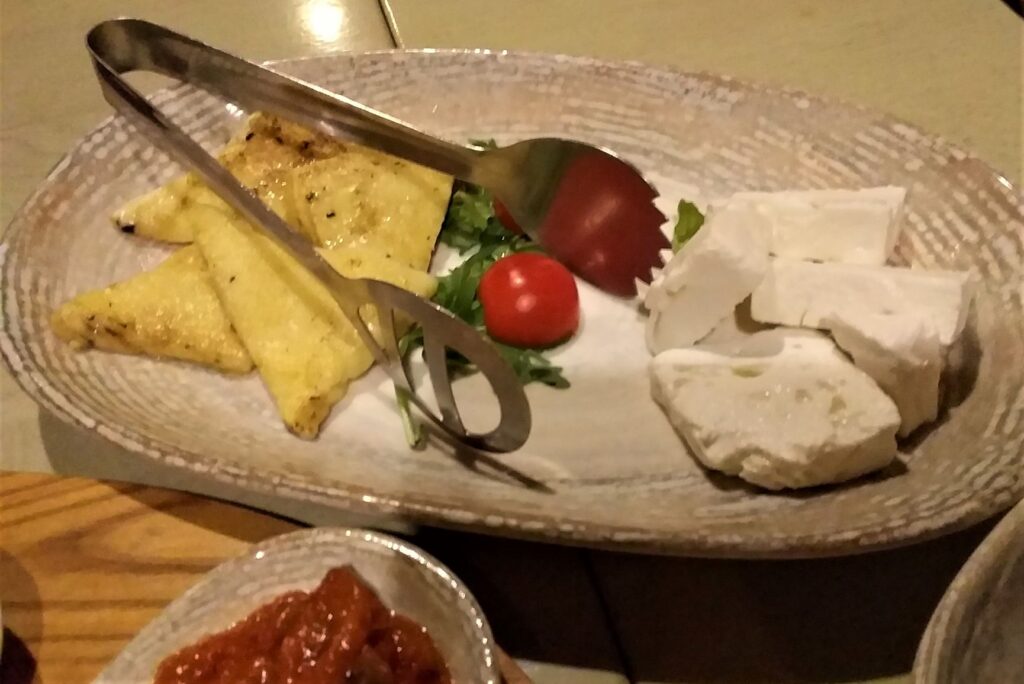
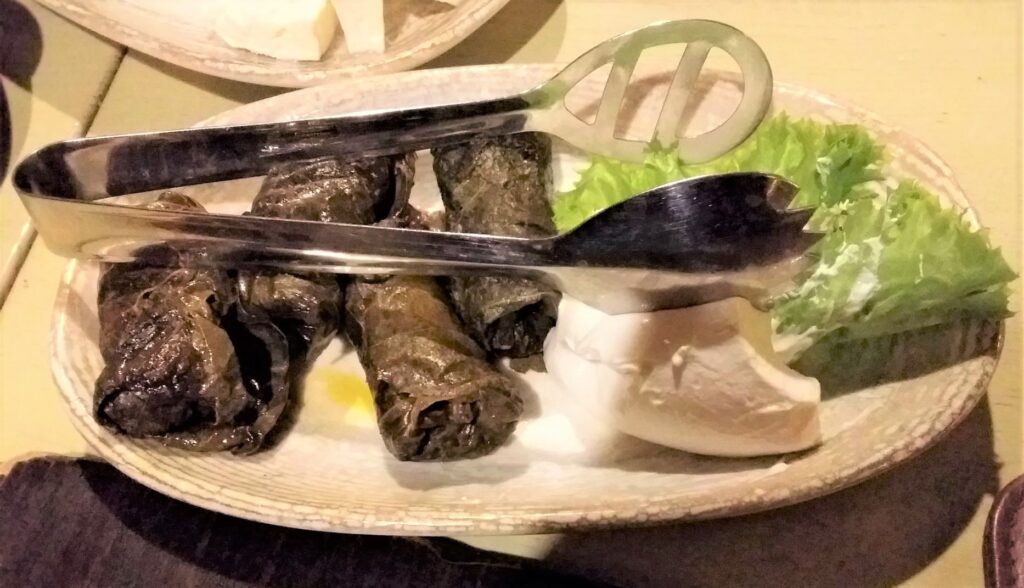
Not done with entrees just yet, we moved on to lozova sarma. To the untrained eye, these look similar to Greek dolmades.
However these babies are filled with minced meat as well as rice, herbs and spices, so don’t order them for your vegetarian mates.
One of the great things about discovering local cuisine with a local, is that you also discover the cultural background of the food you are tasting. Ljubica told me what food was made during which season, how the dishes and condiments were prepared, and which foods were associated with which cultural events. She also told me how her dad once boiled a pot of spuds dry and nearly burnt down the apartment block.
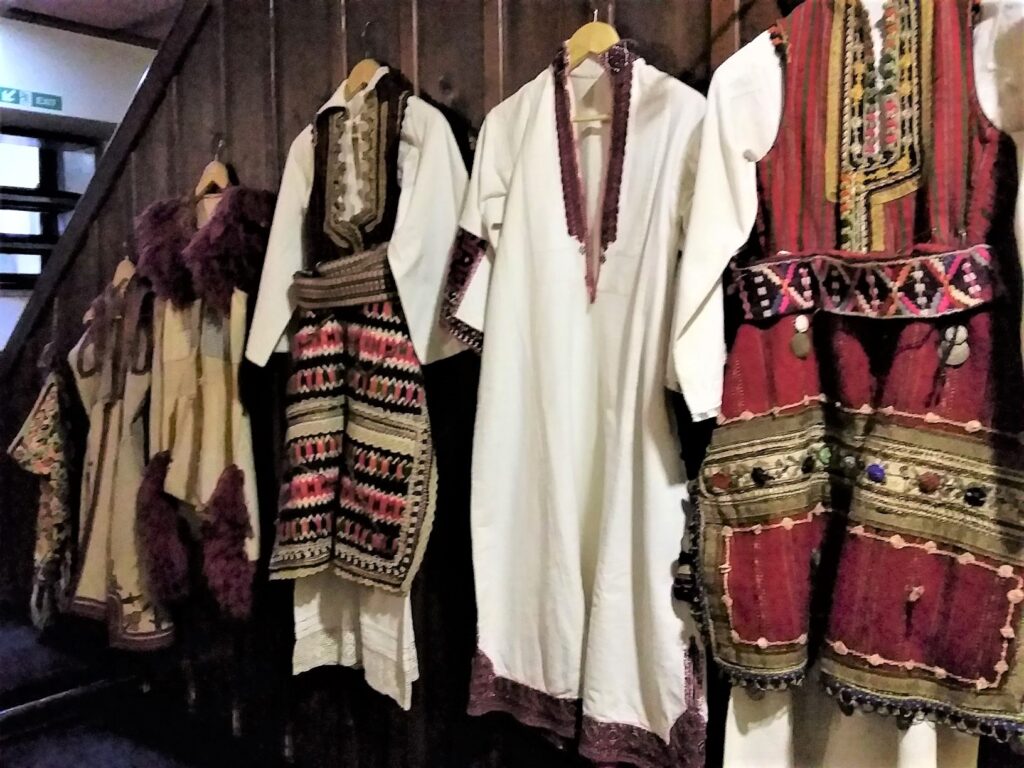
Now some of you might already be feeling a little full after entrée, but stay with us ’cause we’re just warming up.
Time for the mains! Care for some of the splendidly named gravche tavche? Apparently the name means ‘beans cooked in a pan’, and without wanting to make any rash assumptions, I assume that this is the way the dish is prepared. This hearty beany winner is full of flavour, and is nicely accompanied by a glass of grapes fermented in a barrel.
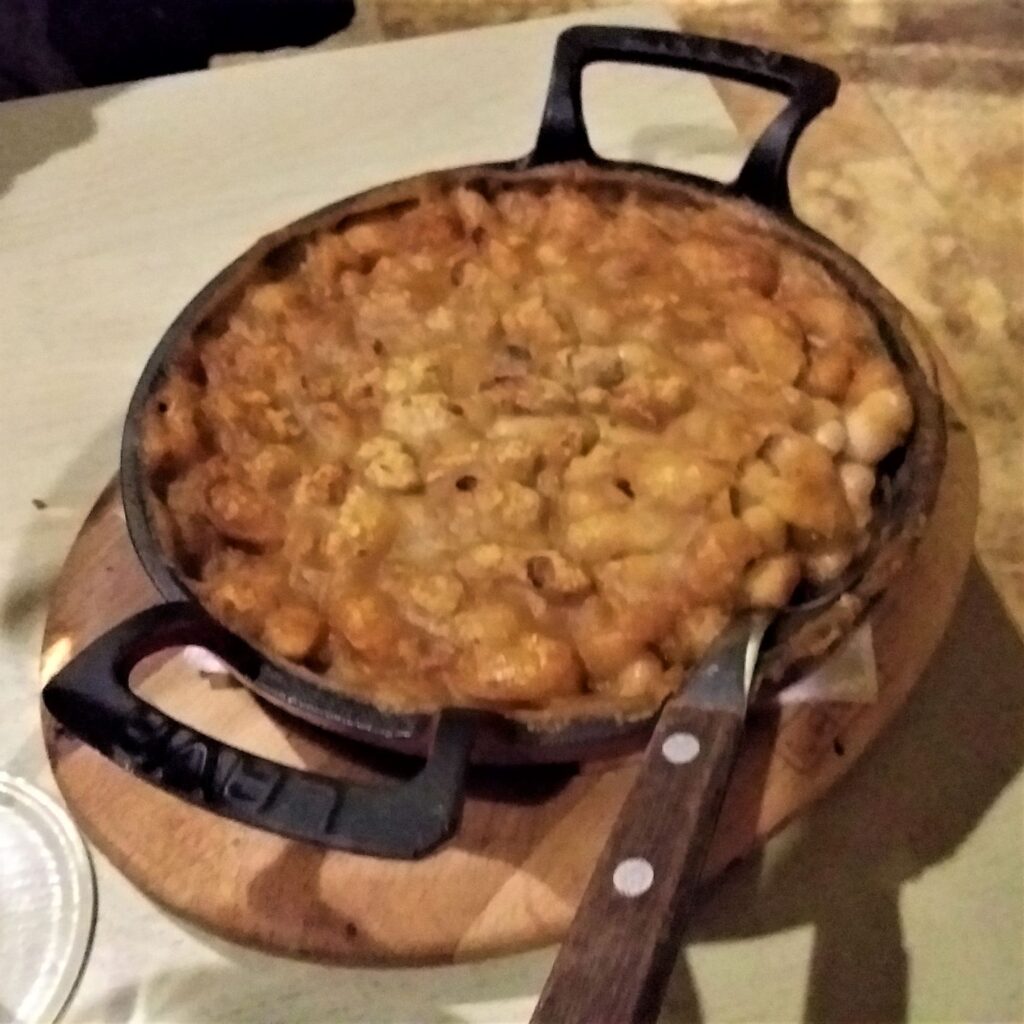
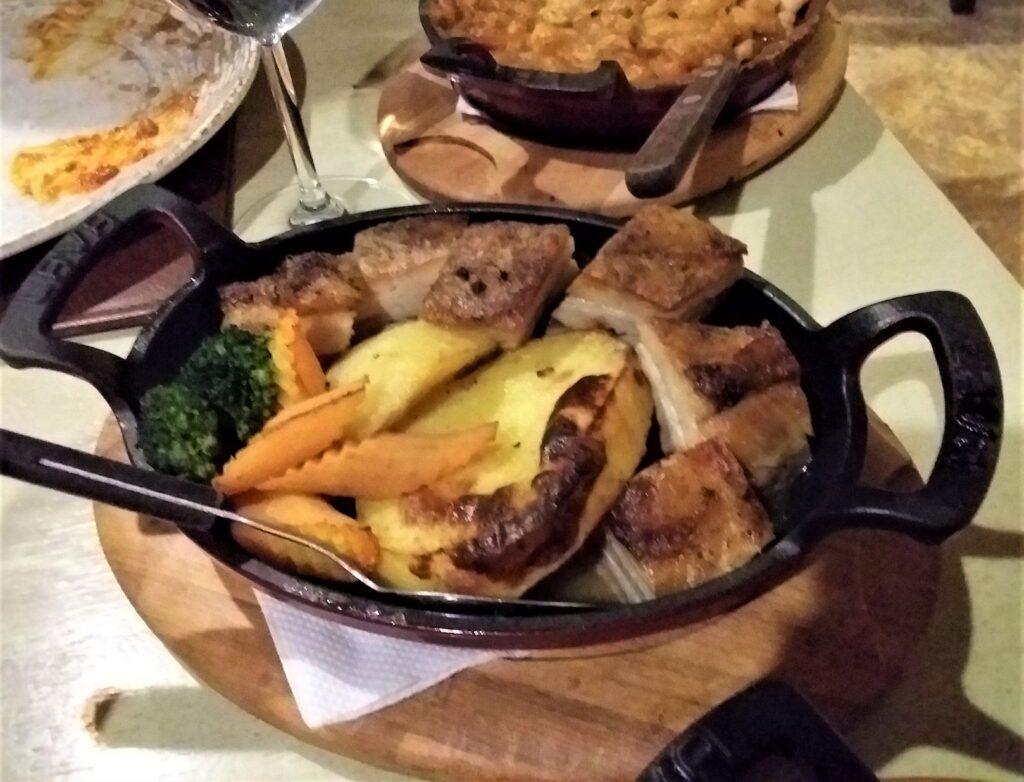
Next up is rebro vo relna, a full-flavoured dish of roast pork and vegetables. Now that’ll stave off the coldest night in Skopje.
Save a little space for the turli tava, a traditional stew of oven baked meat and vegetables. By now I even had to admit I was getting a little on the full side. But I battled on and had a good sized serving of this delicious dish as it was the right thing to do.
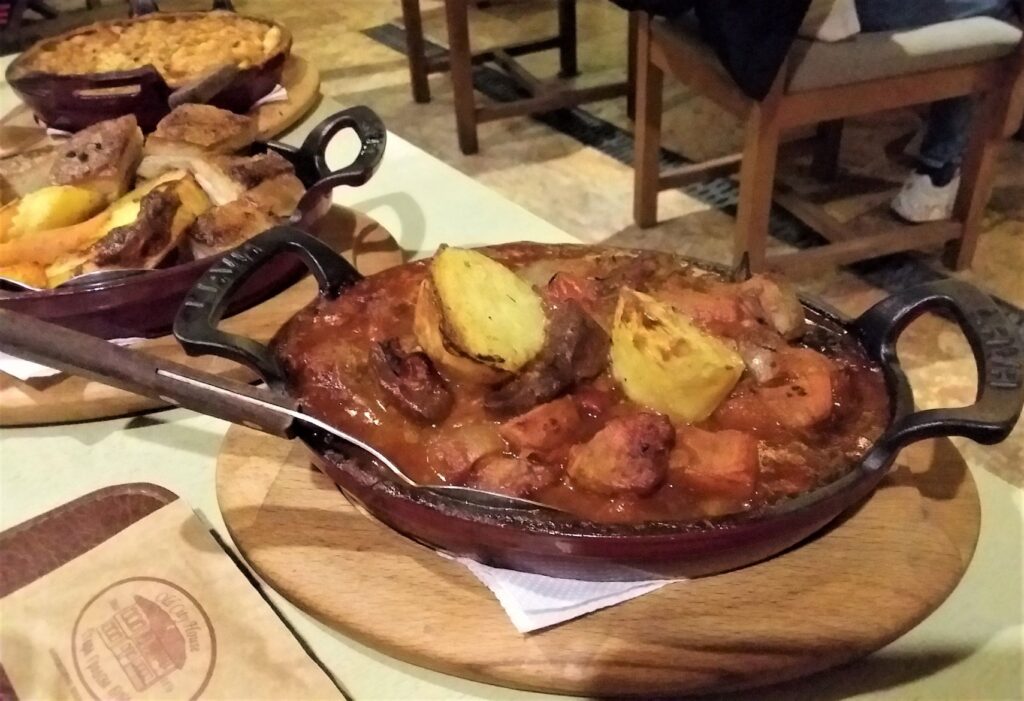
After that big ol’ meal, it was time to push the chairs back and talk for a while, enjoying the cozy atmosphere of the restaurant. Regardless of having to loosen our belts a little, whether we were going to have dessert or not was never in question. The only thing to decide was which one.
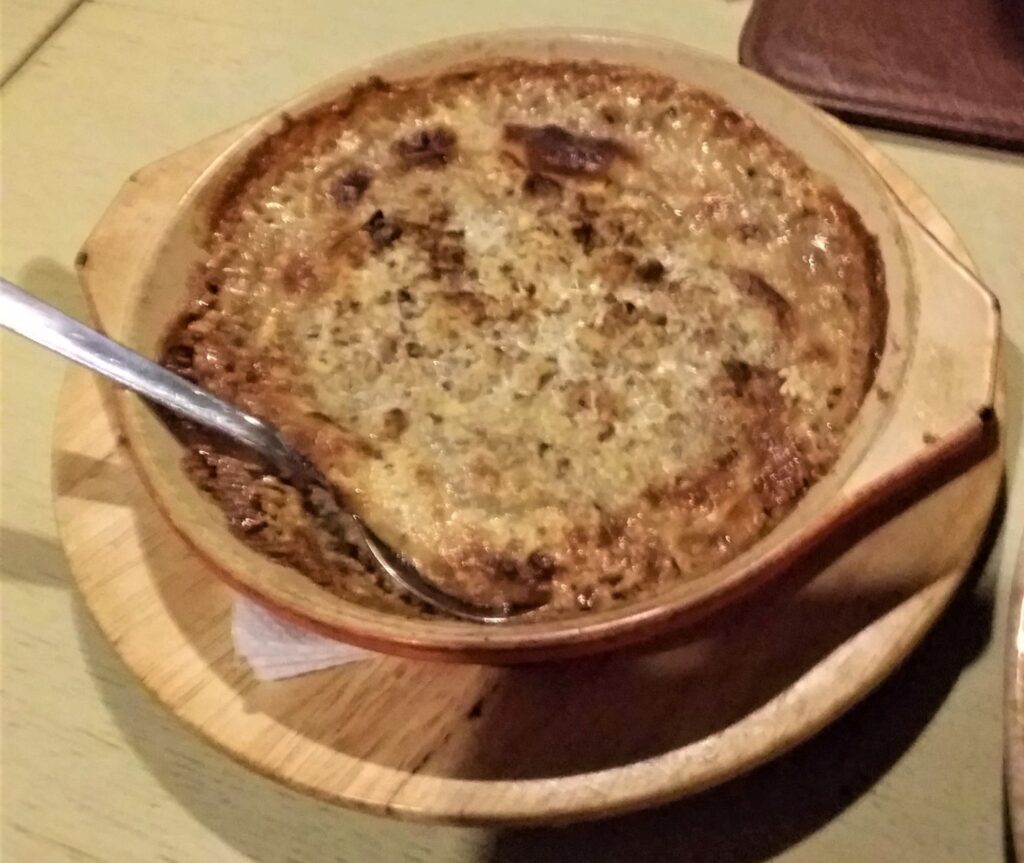
After a suitable pause in proceedings we ordered the taan vo grne, which is a delicious and not too sweet oven-baked tahini dessert. A perfect way to round out the meal.
I thoroughly enjoyed my first practical lesson in Macedonian cuisine, and had the bulging tum to prove it. Trying foods is a great introduction to a nation’s culture, and having a local friend definitely enhances the experience. As an old hippy mate of mine used to say: ‘sharing food is a celebration of life’. I reckon he was right. Priyatno yadenye!
Find out more about North Macedonian cuisine here
If you liked this post, you may also enjoy Chicken Kiev, Gyros, Giros and Yiros
Leave a Reply